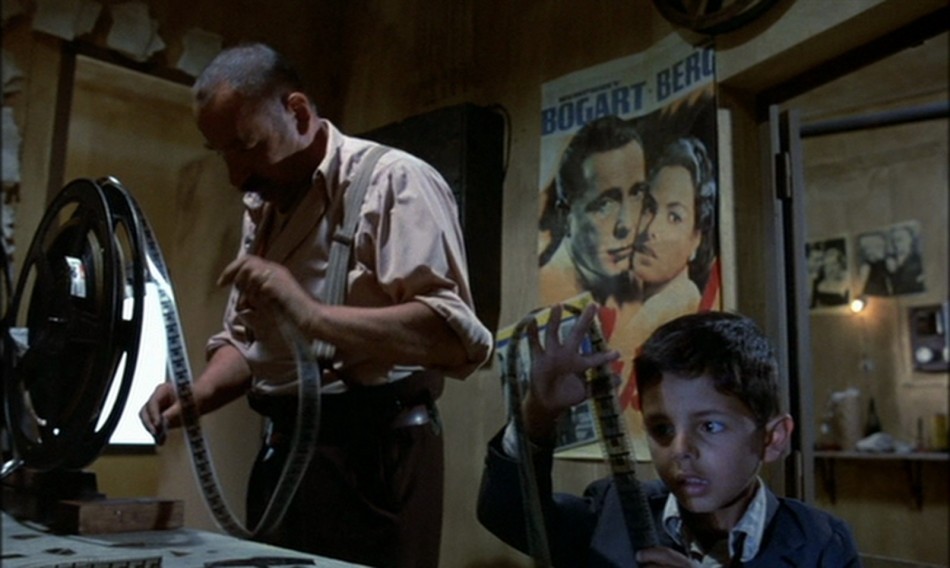
Cinema Paradiso
Why Indie Cinemas Rule Santa Fe, or the Film-to-Digital Conversion
Rewind to 15 years ago. George Lucas is putting the finishing touches on Star Wars: Episode One. Famously known for pioneering all stripes of wonderful technology that contribute to filmmaking, yet never finding a foothold as a true storyteller, Lucas decides he’s sick of popcorn-slinging mall projectionists ruining his hard work with bad focus and torn up 35MM prints. He says its time for the industry to go digital, as there’s no room for error, and Episode One is the last movie he will shoot on film.
Thus begins the campaign to shift the movie industry to digital filmmaking, not just in production but exhibition as well.
How radical is this? Radical enough that of the constants that carved niches in the field of entertainment in the 110 years since the film camera and projector were created, the one most basic to the watching of a movie is the one that has been edged off stage left: the strip of film itself. That celluloid mixture of crystals, chemicals and plastic transformed into something magical with every frame when light hit it, flickering in front of a captive crowd that in film’s earliest incarnations raced for the door because they perceived the train was about to hit them, has turned obsolete.
The computer chip has replaced film. The advantage has been monetary for movie studios and movie theaters. Unlike the romantic post-war scenography of Cinema Paradiso where the show wouldn’t go on without the projectionist, digital projectors project themselves. The film projectionist’s job has joined ranks with that of the telephone operator and the travel agent.
Even as 35MM purists prepared for the apocalypse that digital movies would lose the grain, depth and flicker unique to 35MM projection, the studios saw it differently, forming alliances and negotiating truces. Yes, production got cheaper. Fast forward to today: 90 percent of American theaters have transitioned to digital projection or folded. In most communities the mall theaters converted two years ago, are thriving, and have 50 percent less payroll. However, this enticing benefit to the bottom line was not enough to convince the majority of independents to invest in an upgrade costing around a quarter million dollars per screen. Most independent cinemas survive by the skin of their teeth, never making a dime and lucky not to lose one. Thus most communities have watched their local indies turn into furniture stores.
But not in Santa Fe. In the last 10 years, Santa Fe has lost three mall theaters and only one independent. For The Screen in Santa Fe, which I run, the choice to convert was an easy one: we will die with our boots on. Our sister theaters, the CCA and Jean Cocteau, also installed new systems. These cinematheques pride themselves on quality exhibition for quality films, 110 percent supported by their local community. We survive on pure hatred for mall theaters and the dirt-poor standards they uphold, not just in terms of projection, but also customer service and a true love for filmmaking. We also survive because we exist in an environment that supports art cinema. Santa Fe is a top 10 art market for a reason.
All of us have been threatened with a shutdown at one time or another, and this has made us strong and competitive. It also made our communities recognize how valuable an independent cinema can be — providing challenging films for an intelligent audience, ripe for lobby discussion afterwards, handpicked just for their tastes.
We even have one mall theater that has yet to convert, and a new 11-plex being built for opening next year. Santa Fe, the “City Different,” is bucking yet another American trend: the dissolution of the American cinematheque.
Santa Fe is the only market in America where “12 Years a Slave” was outgrossed by “All is Lost.” Many will blame the local critic, the primarily 60+ senior market, or even the timing offset from a New York opening. But I know better — “All is Lost” played at an independent theater, with passion, love, and care. “12 Years a Slave” played at a mall theater with a rip in the screen. I place full blame for this on the City Different and its respect for art that’s displayed properly — with an undying love, even in the face of the digital conversion.
